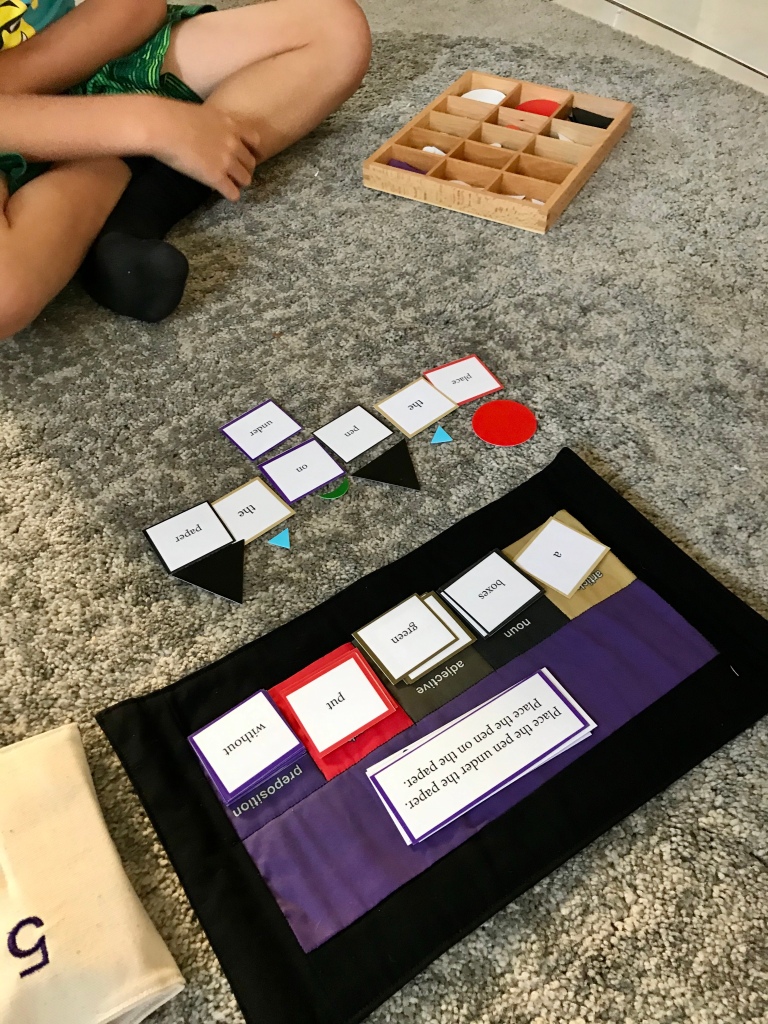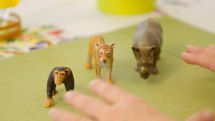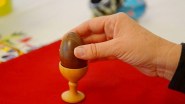Often, the most challenging part of giving a lesson is getting the children excited and ready to learn. Here are seven strategies to ensure your presentation gets off to a good start.
1. Check your attitude: You need to believe in the value of what you’re going to present. The children will smell your fear or hesitation a mile away. If a particular topic scares you, spend more time with it. Read, listen to podcasts, watch videos, use your hands to explore the concept, and find new ways of looking at the subject. When you love it, your students will likely love it. If you’re worried your lesson will be boring, practice ahead of time. A trainer once told me that during the first year you teach in a classroom, you need to practice every single lesson ahead of time.
2, Prime the pump: Sometimes, I’ll start a conversation about the topic a while before the lesson (like at breakfast or in the car). And that way, when it’s time for the lesson, I can say: “Remember when we talked about how angles can be found in buildings, trees, baseball fields and playgrounds? Well, did you know that some of those angles you saw have names, just like you have a name? Look over here…”
3. Play to their sensitivities: Second-plane children have a sensitivity for imagination. For the first time in their lives, they can craft in their minds wondrous images that they’ve never seen or experienced before. They also have a sensitivity for knowledge and culture; they want to know the why and how of everything. Use that to your advantage by starting your lesson with: “Have you ever wondered…” or “Have you ever noticed…”
4. Tell stories: “We’re wired for story”, writes Brene Brown. And it’s true. I recently told my seven-year-old son a funny story about dealing with a pushy bike salesman; he asked me to re-tell it five times in a row and laughed heartily each time.
“Travel stories teach geography; insect stories lead the child into natural science; and so on.”
– Dr. Maria Montessori
Tell lots of stories! In the car and during meals, get used to telling funny, interesting, and moving stories about your own life. Do this to hone your craft, but also because when you introduce a lesson by saying, “I have a story to tell you”, they’ll be more inclined to listen.
For story-telling inspiration, listen to this podcast episode where master storyteller Jay O’Callahan shares his strategies for crafting a good story (and tells a wondrous story of his own along the way). For stories that tie into the Montessori elementary curriculum, read “The Deep Well of Time” by Michael Dorer.
5. Entice them with interesting follow-up work: Sometimes it’s great to let children choose how and when they’re going to follow up on what you’ve presented, but other times, dangling an enticing follow-up activity will draw them to the lesson. Don’t divulge too much information; offer just enough detail to draw them in. You could say, “How would you like to draw all over the kitchen floor? When we’re done learning about different types of angles, you get to do just that!” Suddenly eyes are wide open, faces are turned towards you, and the children are ready to learn. If they ask you questions about the mysterious follow-up, you can just lightly say, “Ahhh, you’ll find out soon enough!” This approach works particularly well for lessons that are more dry and straightforward.

6. Ask for helpers: To get and keep children engaged, let them get their hands on the materials as soon as possible. Give them jobs ahead of time so their presence at the lesson has some significance to them. “Today I want to show you something the Ancient Egyptians discovered five thousand years ago, that we still use in our lives today. Zach, can you be in charge of the push pins? Bill, can you be the stick selector? Olivia, can you be the label reader?”
7. Be ready: In my trainings, I was told that you prepare all the materials with the children prior to the lesson so they know where everything is and what they need. However, I’ve found that in my homeschooling environment, it helps to bring out the materials ahead of time, feature them attractively, and direct the children’s attention towards the rug or table when they seem to be at a good stopping point in their other work. This works particularly well for my seven-year-old son and his elementary-aged friends who visit us to use our materials (I still follow the more traditional approach with my Primary-aged daughter).
Now, go forth and, as Dr. Montessori used to say, “seduce the child”!

*This post includes affiliate links.
Enjoy? Then please share!








 They’re great for a homeschool environment because they don’t take up any shelf space. Their initial purpose is to help the child first
They’re great for a homeschool environment because they don’t take up any shelf space. Their initial purpose is to help the child first  Find the number: Ask the child to set out the hundred chain with the corresponding arrows, while you cut up a few blank paper arrows (cut little rectangles and trim the corners to make arrows). Write a number on the arrow (any number between 1 and 99) and have the child place the arrow on the corresponding bead. If you notice mistakes, you can either let it be for now (and encourage more practice) or invite the child to count from the nearest tens-arrow (e.g. if the paper arrow says “26” and it’s in the wrong spot, invite the child to count linearly from the “20” arrow).
Find the number: Ask the child to set out the hundred chain with the corresponding arrows, while you cut up a few blank paper arrows (cut little rectangles and trim the corners to make arrows). Write a number on the arrow (any number between 1 and 99) and have the child place the arrow on the corresponding bead. If you notice mistakes, you can either let it be for now (and encourage more practice) or invite the child to count from the nearest tens-arrow (e.g. if the paper arrow says “26” and it’s in the wrong spot, invite the child to count linearly from the “20” arrow). can present a new challenge by having them find the missing number in a number sequence. The first few times you do this, you can use the regular arrows for any chain and hide one behind your back. Ask the child to lay out the arrows and tell you which one is missing. (e.g. The child lays out 5, 10, 20, 25 and tells you that 15 is missing.)
can present a new challenge by having them find the missing number in a number sequence. The first few times you do this, you can use the regular arrows for any chain and hide one behind your back. Ask the child to lay out the arrows and tell you which one is missing. (e.g. The child lays out 5, 10, 20, 25 and tells you that 15 is missing.)
 Polygons: The chains provide a fun exploration of shapes, from triangle to decagon. Have the child carry all the chains on a tray to a large rug and ask her to make a closed shape with each chain imagining that the center was pressing out evenly on all sides. Then ask her how many sides each shape has. If you have a Geometry Cabinet, ask her to find the corresponding shape from the cabinet and put it inside or next to the bead shapes. The child can write on a slip of paper the number of sides each shape has, and then you can give the names. You can do a three-period lesson with a Primary child, and you can make an etymology chart with an Elementary child. The child can also build the shapes around each other, with the square surrounding the triangle, the pentagon surrounding the square, etc.
Polygons: The chains provide a fun exploration of shapes, from triangle to decagon. Have the child carry all the chains on a tray to a large rug and ask her to make a closed shape with each chain imagining that the center was pressing out evenly on all sides. Then ask her how many sides each shape has. If you have a Geometry Cabinet, ask her to find the corresponding shape from the cabinet and put it inside or next to the bead shapes. The child can write on a slip of paper the number of sides each shape has, and then you can give the names. You can do a three-period lesson with a Primary child, and you can make an etymology chart with an Elementary child. The child can also build the shapes around each other, with the square surrounding the triangle, the pentagon surrounding the square, etc.


 I’ve inherited Montessori fractions in several of my classrooms, and I’ve often found that a well-meaning predecessor had written the corresponding value on the underside of each fraction piece. At first glance, this might seem helpful. It sure makes cleaning up those pesky fractions a lot quicker!
I’ve inherited Montessori fractions in several of my classrooms, and I’ve often found that a well-meaning predecessor had written the corresponding value on the underside of each fraction piece. At first glance, this might seem helpful. It sure makes cleaning up those pesky fractions a lot quicker!
 Take a moment to observe the child’s concentration, enjoy his smile of accomplishment, and know that you helped him move one step closer towards reaching his full potential as a creative problem-solver.
Take a moment to observe the child’s concentration, enjoy his smile of accomplishment, and know that you helped him move one step closer towards reaching his full potential as a creative problem-solver. In an earlier
In an earlier  Most commercial toys try to cram a lot of “bang for their buck”. Imagine, with just one toy, your child will be able to learn colors, numbers and shapes! She’ll practice sorting and stacking while listening to classical music, and each time she does it right, the toy will light up and shout out “Good job!”
Most commercial toys try to cram a lot of “bang for their buck”. Imagine, with just one toy, your child will be able to learn colors, numbers and shapes! She’ll practice sorting and stacking while listening to classical music, and each time she does it right, the toy will light up and shout out “Good job!” Last week we talked about preparing our home to help our children be successful. This week, let’s focus on Montessori materials. How hard is it to make them? What should you keep in mind?
Last week we talked about preparing our home to help our children be successful. This week, let’s focus on Montessori materials. How hard is it to make them? What should you keep in mind?